






























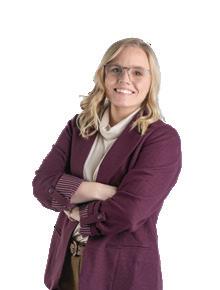



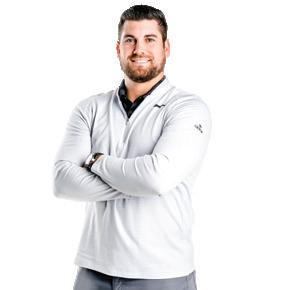
















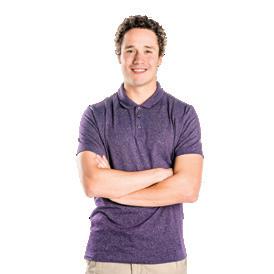
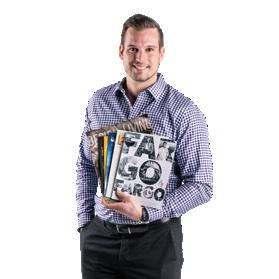
 MIKE BRADY KIM
LEVI TY
GENEVA
GRANT
SAM JOSIAH
JENNY
DEVAN
TORI
HAILEY
MIRANDA
JESSICA
NICK
KELLEN BEN
KORY
MEGAN
TOMMY JONATHAN
MIKE BRADY KIM
LEVI TY
GENEVA
GRANT
SAM JOSIAH
JENNY
DEVAN
TORI
HAILEY
MIRANDA
JESSICA
NICK
KELLEN BEN
KORY
MEGAN
TOMMY JONATHAN
At Eide Bailly, we understand that agriculture is more than just a business—it’s a way of life. That’s why we’ve been proudly serving ag producers for over 100 years, offering guidance and support every step of the way, from planting to profit. eidebailly.com/ag

“Death and taxes are the only certainties in life,” as the saying goes. Yet many small businesses avoid discussing the topics of succession and estate planning, and farmers are no exception.
A full one-third of America’s 3.4 million farmers are over 65, according to a 2017 Census from the U.S. Department of Agriculture, and another million or so are nearing retirement.
But what’s even more important is that fewer than one in four farmers have a succession plan. “That’s a recipe for disaster,” according
to Alex Vasichek, a leading Agricultural Focused Financial Planner at Elevate Financial in Fargo, ND. “The more decisions you can make now, the fewer family feuds you’ll have to referee later.”
More often than not, competing and counter claims can lead to confusion. When you work with a professional to develop a plan, you can avoid many of these nine common pitfalls:



With agriculture being one of the largest industries in the Midwest, it is not surprising that it is an agtech hub. A few years ago, global innovation platform Plug and Play created a North Dakota AgTech Accelerator program that provides resources to two batches of up-and-coming agtech startups each year. This March, they announced their seventh batch of startups for the program, which included 12 agtech companies ready to get their names out in the world. These companies were chosen from all over the world because of their innovative approach to agriculture. We at Future Farmer are always excited to hear about the new technology being made to make farmers’ lives easier, so we asked some of Plug and Play's newest startups some questions to get to know what their company is all about!
AgraCheck’s elevator pitch:
AgraCheck is a smart farming platform that helps farmers easily find and request innovative solutions for their problems.
How did you get the idea to start your company?
My co-founder Sebastian and I [CEO Florian Stark] wrote our master's theses on digital agriculture technology. We coincidentally met during an innovation challenge on smart farming technology that had a goal to "bring digital agriculture to the farmers." After exchanging our experiences from research, we decided to work on a solution together.

What does it mean to be a part of Plug and Play's North Dakota Agtech Program?
For us, it means joining a world-class agtech ecosystem that connects startups with industry leaders, investors, and mentors. We are located in Germany, but our business model only works if we expand it globally. Plug and Play is a perfect partner, as the experts and the corporates in their system are from all over the world.
If your product/service was already being used by everyone globally, what impact would that have?
AgraCheck's vision is to create sustainable agriculture using smart technologies. Basically, farmers find and integrate new technology faster and, therefore, the transition to a more sustainable agriculture would be accelerated. According to the SMARTer2030 study from the global e-sustainability initiative, an accelerated adaption of novel agriculture technologies could save up to 2 gigatons of CO2 and 716 trillion liters of water by 2030!
How are you incorporating growers into your business plan?
Growers are our users and therefore the center of our business plan. We help them find and compare smart farming solutions for their operations. We understand the needs and challenges of farmers, and we want to support them in making informed and independent decisions about new technologies. Furthermore, we want to create a feedback loop between growers and technology providers, so that they can learn from each other and improve their products and services.
Where do you see your company in 10 years?
AgraCheck is the global platform for smart farming solutions. We have helped millions of farmers to organize their businesses more efficiently and sustainably. By analyzing the data created on our
platform, manufacturers of agriculture technology will be able to develop their solutions to be more customer-centric.
By participating in Plug and Play's North Dakota Agtech Program, what do you hope to accomplish? Have you considered expanding your operations to the Upper Midwest?

First, we want to generate insights into the agriculture industry from overseas. Second, we are searching for partners for POCs or other types of cooperation. Third, by exchanging our ideas and pitching our company to the network, we want to receive valuable feedback that helps us to improve our services. We want to translate our website into English as soon as possible, to be available to the whole US and of course to the Upper Midwest, as well.

This magazine reaches 16,000+ farmers. In one sentence, what would you like to tell them?

If you want to find smart farming technology for your farm, try agracheck.com!
 FinTech Community Frankfurt GmbH
Seedhouse Accelerator GmbH
FinTech Community Frankfurt GmbH
Seedhouse Accelerator GmbH
Cattler Corporation’s elevator pitch:
Cattler is digitizing the cattle industry with a one-stop shop platform that integrates all the processes of a cattle farm in a unified app. Our platform helps the farmer save time with quicker operational tasks like feeding and makes it so the farmer does not have to transfer data between spreadsheets or different software. But it also allows them to save money by avoiding overfeeding or underfeeding and controlling inventories automatically. Cattler makes all these tasks easier because it reads from any device and brings all the information together in a very simple way.
Our founding team is a mixture of cattle farmers and technologists. We began playing with computer vision as a way to predict animal weight—which is a key metric in the cattle business—with imagery instead of scales. We got to a prototype, but ultimately we understood
that even if that was cool, in order to enable the farmer to make better decisions with it, we were still missing all the operational context around it. We discovered there was more value in bringing all the parts of the puzzle together, having a fully user-friendly platform, and not just having one cool sensor. That's how we switched from sensors to what Cattler is today.
It is not only a great honor to be part of this cohort, due to the great reputation of Plug and Play, but also a great opportunity to expand deeper into certain areas in the Midwest. Here, we can have a better chance to expose our system to more farmers, along with companies in the cattle ecosystem that are collaborating with Plug and Play.

If your product/service was already being used by everyone globally, what impact would that have?
It would make for more competitive cattle farmers who are more on top of their numbers but also more accountable to third parties and to society (financially, welfare-wise). Additionally, the cattle farmers would
be more sustainable in the sense that Cattler also connects data from the productive side of cattle farming with the emissions side. It would also help build models to validate sensors for monitoring methane emissions and create new additives for mitigating the emissions.
Ultimately, our platform is helping to create a public asset of information that will drive the industry to a better position, inward and outward. Widespread use would also make the market more fluid—with a higher volume of business happening that we might facilitate and how much information is circulating—while at the same time protecting the privacy of data. It will make a more healthy and competitive industry, rolling out a new paradigm of how information is produced, used, and shared.
We ask our farmer members to recommend us to other farmers. We also ask feed and animal health vendors to do the same.
We see our company as the global leader in digital cattle farming, connecting all sorts of support services and companies to the industry and being the platform where everything happens.

By participating in Plug and Play's North Dakota Agtech Program, what do you hope to accomplish? Have you considered expanding your operations to the Upper Midwest?

We want to achieve certain commercial agreements with the supporting industries (insurance, banks, animal nutrition) and also to expand our operations as much as we can directly with farmers. We already have members in North Dakota, South Dakota, and Minnesota (as well as Kansas, Nebraska, Iowa, and Missouri) and we want to turn both North Dakota and Kansas (both states where Plug and Play has a base) into growth hubs with the industry.
This magazine reaches 16,000+ farmers. In one or two sentences, what would you like to tell them?
Check out what we are doing, you might be surprised by what we have—give us a chance to show what we can do. We are constantly improving our platform based on the feedback farmers give us—they are the ones co-creating Cattler with us.

MicroMGx’s elevator pitch:
We deliver Nature's solutions to the world's farmers. Our lead product is a naturally produced herbicide with the first new mechanism in 30 years.
How did you get the idea to start your company?
Our founders realized two things: Microbes are the world's best chemists, and there had to be a better way to find the 97% of nature's solutions that are still undiscovered. The dramatic gains in genomics, metabolomics, and bioinformatics were the keys.
What does it mean to be a part of Plug and Play's North Dakota Agtech Program?

Being part of this cohort has given us a place to ask the tough questions about the business of startups, find resources to help us, and contact many potential corporate partners. All of this is with people who understand AgTech and have the experience to guide us.
If your product/service was already being used by everyone globally, what impact would that have?
Our herbicide is more effective against herbicideresistant weeds. Over 30% of crop losses around the world are due to weeds, and the yield lost due to weeds could feed one billion people. Significantly reducing farmers' crop losses with a natural—instead of synthetic—herbicide is our goal. The economics, the environment (fewer synthetic herbicides being used), and soil health are all potentially huge impacts.
How are you incorporating growers into your business plan?
We have just applied for a grant through the University of Nebraska Lincoln’s School of Agronomy to test our herbicide in their greenhouses and microfields. We are hiring an Agribusiness graduate, whose father has a family farm, to help us run this project. We will be getting not only data from the experiment, but input from his father and fellow farmers about the needs, concerns, and opinions regarding herbicides for the future.
Where do you see your company in 10 years?
In 10 years, we will have developed and launched our first natural herbicide and ideally will have discovered
3-5 more natural herbicides/pesticides/fungicides that will be in different stages of development. We will hopefully be partnering with most of the top 10 agriculture companies [in the world], and farmers will be asking for one or more of our natural solutions in 35 [or more] countries around the world.

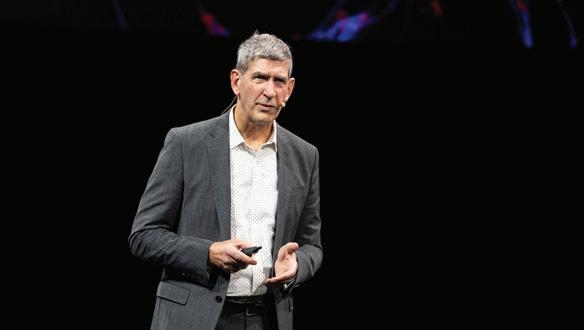
By participating in Plug and Play's North Dakota Agtech Program, what do you hope to accomplish? Have you considered expanding your operations to the Upper Midwest?


We hope to find an additional corporate partner or two between now and the Plug and Play Expo in Topeka, Kansas in June. Since we are at the start of raising seed funds, we also hope to identify promising venture capitalists and angel investors.

This magazine reaches 16,000+ farmers. In one or two sentences, what would you like to tell them?
We know you are hungry for more options to defeat weeds; we have one and will develop it as quickly as possible. With our technology platform, we will continue to attack the pests that attack your crops—in a safe, natural way.
MicroMGx MicroMGxUnibaio’s elevator pitch:
Unibaio is a nanotech startup founded by a group of Argentinean scientists that aims to reduce the environmental impact of the agrochemical industry by introducing a proprietary delivery tech. They've developed a new and innovative biodegradable nanocapsule by utilizing natural polymers, which can effectively decrease the active ingredient in all agrochemical formulas by up to 80%. The company provides a new approach for the agrochemical industry that meets the demands of new environmental regulations and allows farmers to continue using effective pesticides, herbicides, and fertilizers while decreasing the need for harmful chemicals and preventing pollution caused by their use.
The idea for Unibaio, a company that offers innovative solutions for agrochemicals, emerged after ten years of
research at an Argentine university. The CTO, Claudia, was born in a small agricultural town in the province of Buenos Aires, where her father flew crop dusters. After studying biology at UC Davis, Claudia became a researcher and sought alternative ways to protect plants in a more effective and environmentally friendly way.


It was her son, who studied materials engineering, who introduced Claudia to her current partner, Vera, a scientist specializing in nanotechnology who was also a researcher at the same Argentine university. Together, they proposed investigating how materials science could improve pesticide delivery and create biological formulations that could be as efficient as synthetic ones. Despite these two fields not commonly working together, Claudia and Vera combined their knowledge and embarked on a 10-year development project.
Finally, they developed the technology that Unibaio now commercializes for agrochemical companies as a tool to improve the effectiveness and efficiency of their formulations, whether biological or synthetic. The idea for Unibaio arose from the need to find a more effective and environmentally friendly solution to protect plants, and it was through the collaboration of two scientists from seemingly disparate fields that they were able to develop this innovative technology.
Unibaio L’Oréal-UNESCO Argentine National Award 2020of agriculture technology and creating solutions that have a positive impact on the environment. For Unibaio, it means having the opportunity to showcase their nanotech startup and their innovative biodegradable nanocapsule to an audience of industry experts, investors, and potential collaborators.
Unibaio's technology is not only groundbreaking but also essential in today's world, where there is a growing concern about the environmental impact of the agrochemical industry. By reducing the active ingredient in agrochemical formulas by up to 80%, Unibaio's solution allows farmers to continue using effective pesticides, herbicides, and fertilizers while decreasing the need for harmful chemicals and preventing pollution caused by their use.
As part of Plug and Play's North Dakota Agtech Program, Unibaio has the opportunity to collaborate with other startups and experts in the field, and to benefit from the program's resources and network. It's a chance for Unibaio to take their solution to the next level and to make a real difference in the agriculture industry.

In addition, being a part of the North Dakota Agtech Program also means that a startup can gain exposure to potential customers and partners in North Dakota's agriculture industry, which could
If Unibaio's cutting-edge delivery technology were to be adopted globally, the impact could be enormous, according to CEO Matias Figliozzi. The technology, which is both cost-effective and scalable, could significantly reduce the market share of traditional synthetic pesticides, which often contain toxic and harmful ingredients that damage the environment. Additionally, Unibaio's innovative approach could lead to greater adoption of biological alternatives, which would be a major boon for farmers and consumers alike. Moreover, the concentrated formulation developed by Unibaio could be a game-changer for other startups, such as those working on robotics for farmers, by improving their application capacity. For farmers themselves, Unibaio's approach could mean more affordable and sustainable pesticides and phytosanitaries, which could have a positive impact on their bottom line. Overall, by decreasing the use of toxic compounds found in traditional agrochemicals, Unibaio's technology has the potential to revolutionize agriculture and food production worldwide, while improving the quality of the food we consume.
At our company, we firmly believe in the power of collaboration. That's why we make it a top priority to work closely with growers to incorporate their valuable input into our business plan. By partnering with growers, we are able to take their feedback and recommendations to heart, allowing us to develop our technology from the lab and into the real world with greater success.

Growers are an integral part of our business plan, and we actively seek out their opinions and suggestions to help define our priorities, like how can we determine which pesticides are causing the most environmental issues or which biological products should we prioritize to improve their effectiveness. Through this collaboration, we are able to tailor our products and services to better meet the needs of the growers we serve through agrochemical companies.
In 10 years, I envision Unibaio as a leading force in sustainable agriculture, with our technology being the new standard in agrochemical formulation. Our innovative delivery system will have revolutionized the way crops are protected, making traditional synthetic pesticides a thing of the past. Instead, farmers all around the world will be using Unibaio's environmentally-friendly and affordable products to keep their crops healthy and thriving.
Not only that, but we will have expanded our operations to other industries beyond agriculture, using our technology to address other global challenges such as water pollution and soil regeneration. Our company will be a shining example of how science and innovation can be harnessed for the greater good, and we will continue to prioritize sustainability and social impact in everything we do.
I am excited to see how Unibaio will grow and evolve in the coming years, and I am confident that our team's passion and dedication will continue to drive us toward a more sustainable and prosperous future.

By participating in Plug and Play's North Dakota Agtech Program, what do you hope to accomplish? Have you considered expanding your operations to the Upper Midwest?
We hope to accomplish several goals by participating in Plug and Play's North Dakota Agtech Program. Firstly, we hope to collaborate with other innovative startups and industry leaders to develop cutting-edge technologies that can address the challenges facing agriculture today. We also look forward to gaining insight into the unique needs and opportunities of the North Dakota agricultural landscape, which could help us tailor our solutions to better meet the needs of farmers and other stakeholders in the region.
As for expanding our operations to the Upper Midwest, it's definitely something we're considering. The region has a rich agricultural history and is home to many innovative farmers who are eager to adopt new technologies that can help them improve their yields and reduce their environmental impact. If we see a strong potential synergy in the Upper Midwest, we would certainly be open to exploring expansion opportunities in the region. We are deciding where to relocate our HQ in the US.
This magazine reaches 16,000+ farmers. In one sentence, what would you like to tell them?
To the 16,000+ farmers reading this magazine, we at Unibaio are here to help accelerate the transition to more sustainable agriculture!
Agrointelli’s elevator pitch:
We deliver a fully automated implement carrier for agricultural and horticultural production systems with a complete digital infrastructure enabling efficient planning, execution, supervision, and documentation of all in-field tasks performed by our robot. The robot "Robotti" enables the farmer and grower to reduce uniform repetitive working conditions, save energy, minimize use of pesticides, and improve documentation and traceability in the food chain.
How did you get the idea to start your company?
I [Founder & CEO Ole Green] am a farmer who grew up on a farm and learned to understand the needs of the soil and the plants. I then educated myself as an agro-engineer and agronomist and received a Ph.D. in electronics, all related to agriculture. For the last 20 years, I have been working with automation of plant production and our company is the product of 25 years of education and hard work.
What does it mean to be a part of Plug and Play's North Dakota Agtech Program?
Participation in Plug and Play's North Dakota Agtech Program has given me a lot of new connections and insight into possibilities for how to open the US market as an EU-based company. The Plug and Play team has introduced us to valuable partners and potential investors.
If your product/service was already being used by everyone globally, what impact would that have?
Today we have deployed our Robotti in more than 15 countries, primarily in Europe, enabling farmers and growers to save money and become more efficient and more sustainable.

How are you incorporating growers into your business plan?
We have, in the first years of the company's existence, entered into dialogue with farmers and growers all over the globe to understand their needs and pains. Though we are currently primarily on the European market, our robot has already been tested with farmers in California, Mexico, Canada, and Australia.
Where do you see your company in 10 years?
Hopefully having a global impact on sustainable food production.
By participating in Plug and Play's North Dakota Agtech Program, what do you hope to accomplish? Have you considered expanding your operations to the Upper Midwest?
We hope to create a stronger network and a platform to enter the US market.
This magazine reaches 16,000+ farmers. In one sentence, what would you like to tell them?
Automation and robotics are not futuristic things—they are now, and they can transform your business today.
AgTechLogic’s elevator pitch:
AgTechLogic’s technology provides a reduction in herbicide use by up to 90% with Intelligent Precision Spraying.

How did you get the idea to start your company?
I [CEO Tom Gauthier] felt it was time to take my 30+ years of experience in engineering, technology, and business into the agriculture industry.
What does it mean to be a part of Plug and Play's North Dakota Agtech Program?
I am very honored to be a part of the program. The ability to connect to more professionals can help us help the planet faster!
If your product/service was already being used by everyone globally, what impact would that have?
WOW! Billions of tons of herbicides would not be wasted on the ground and in our waterways; there would be a dramatic impact on the climate and human health. There would also be savings for growers, which would help them lower the cost of food production.
How are you incorporating growers into your business plan?
We are already working with them on trials and pilots with universities and independently. We are working with growers (customers) to bring new insights to our technology.
Where do you see your company in 10 years?
I see AgTechLogic as the most successful company deploying Intelligent Precision Spraying and the leader in gathering, analyzing, and providing insights to customers while they spray with our platform.
By participating in Plug and Play's North Dakota Agtech Program, what do you hope to accomplish? Have you considered expanding your operations to the Upper Midwest?

We hope to continue to expand the education of our technology and get support to expand faster.
This magazine reaches 16,000+ farmers. In one sentence, what would you like to tell them?
Reduce your herbicide use, save money, and make a significant impact on the soil, planet, and human health.
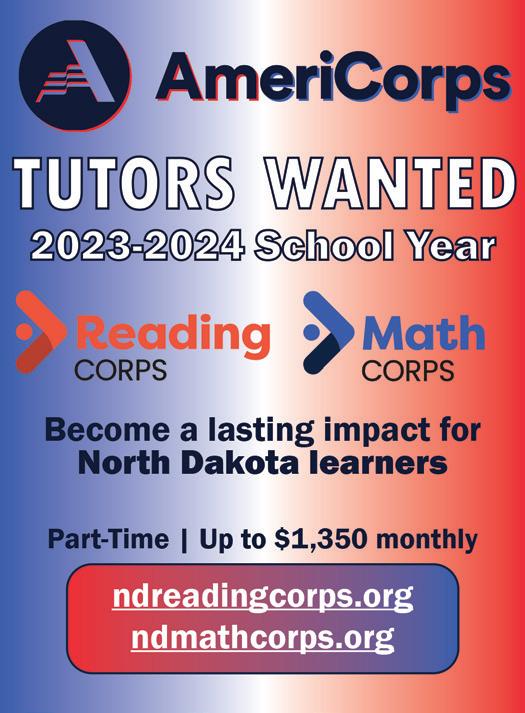


Cattle Scan’s elevator pitch:
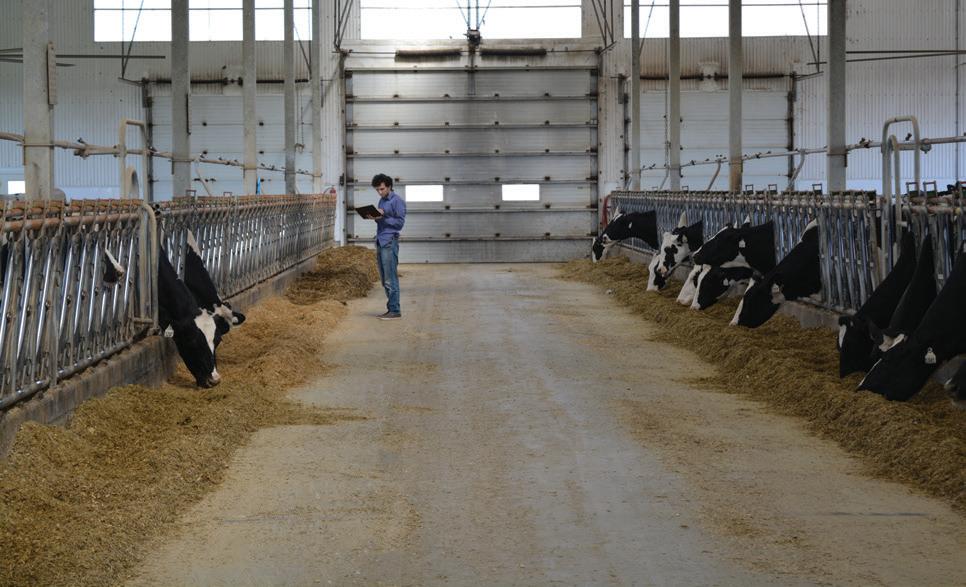
Introducing our revolutionary cow monitoring solution, a game-changer for milk producers. With our state-of-theart technology, we enable early sickness detection, ensuring the well-being of your herd and maximizing profitability. By harnessing the power of real-time data and advanced analytics, our solution empowers you to proactively address health issues, minimize losses, and optimize production.
Having grown up on dairy farms, I [CEO Denis Tokarev] have a profound appreciation for the tireless efforts exerted by farmers. It is also painful losing one of your best animals because she was sick and you noticed it too late. So my team and I have made a heartfelt commitment to embracing cutting-edge technology to support dairy producers and harness the power of stateof-the-art innovations.
What does it mean to be a part of Plug and Play's North Dakota Agtech Program?
It’s a great networking opportunity!
If your product/service was already being used by everyone globally, what impact would that have?
It would save millions of dollars for milk producers, increase the industry's efficiency, and reduce greenhouse gas emissions substantially.
How are you incorporating growers into your business plan?
Agriculture is an interconnected industry where positive changes on one side will most probably have a positive impact on the other. Though our current focus is on milk producers, we envision multiple strategies on how growers can be incorporated in our business plan: firstly, with farm monitoring and data collection via developing a sensors-based solution that can be installed in the milk producers' farms to monitor various parameters such as soil moisture, temperature, humidity, and other relevant environmental factors. This data can be collected and analyzed to provide valuable insights to both milk producers and growers, helping them
make informed decisions about irrigation, fertilization, and crop management.
Secondly, we envision building a platform that integrates the entire supply chain, from milk producers to growers. This platform can facilitate seamless communication and collaboration between the two parties, enabling growers to share information about their crops, such as yield estimates, crop quality, and availability. Milk producers can use this information to optimize their production planning and ensure a steady supply of feed and forage for their livestock.
Finally, we want to see collaborative R&D efforts. Cattle Scan can lead a collaboration between milk producers and growers in research and development initiatives. This can involve jointly exploring innovative farming techniques, experimenting with new technologies, and conducting trials to optimize crop yields and quality. By working together, we can gain valuable insights from growers while providing them access to cutting-edge IoT solutions and expertise.
I see Cattle Scan as a global player in our targeted markets. By participating in Plug and Play's North Dakota Agtech Program, what do you hope to accomplish? Have you considered expanding your operations to the Upper Midwest?
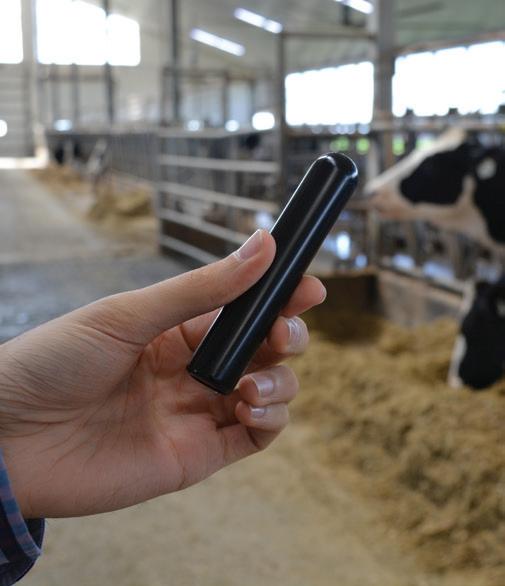
Yes, we are expanding in the Midwest market.
This magazine reaches 16,000+ farmers. In one sentence, what would you like to tell them?

If you would like to learn more about our system or our plans, please reach out to me directly at denis@cattlescan.ca
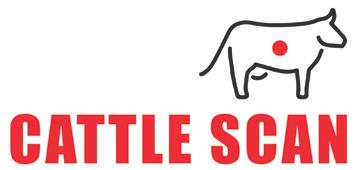
Universal Microbes’ elevator pitch:
At Universal Microbes, we are at the forefront of the microbial revolution that is poised to transform the $200 billion global fertilizer industry. Our company specializes in researching and manufacturing a diverse range of bacterial and fungal species with universal applications, extending beyond agriculture. With our robust portfolio, we are uniquely positioned to capitalize on the immense potential of microbes across various industries. Our innovative microbial solutions provide sustainable alternatives to traditional fertilizers, revolutionizing crop growth, enhancing nutrient uptake, and promoting soil health. Join Universal Microbes as we shape the future of agriculture and beyond, harnessing the power of microbes to revolutionize the global fertilizer market and pave the way for a more sustainable future.
How did you get the idea to start your company?
Our extensive research in microbial science has revealed a crucial interdependence between our food system and the environment. The excessive use of synthetic inputs in food production has resulted in the systematic degradation of our environment. However, through our research, we have discovered that microbes play a pivotal role in addressing this issue.
Microbes act as the common factor that aids in the restoration and enhancement of both our food system and the environment. They possess incredible capabilities to improve soil health, increase nutrient availability, and promote sustainable agricultural practices. Our core idea is to harness the power of beneficial microbial strains, so we can minimize the reliance on synthetic inputs, mitigate environmental damage, and ensure the long-term viability of our food production systems.
What does it mean to be a part of Plug and Play's North Dakota Agtech Program?
As a participant in the North Dakota Agtech Program, UM has the chance to engage with a network of
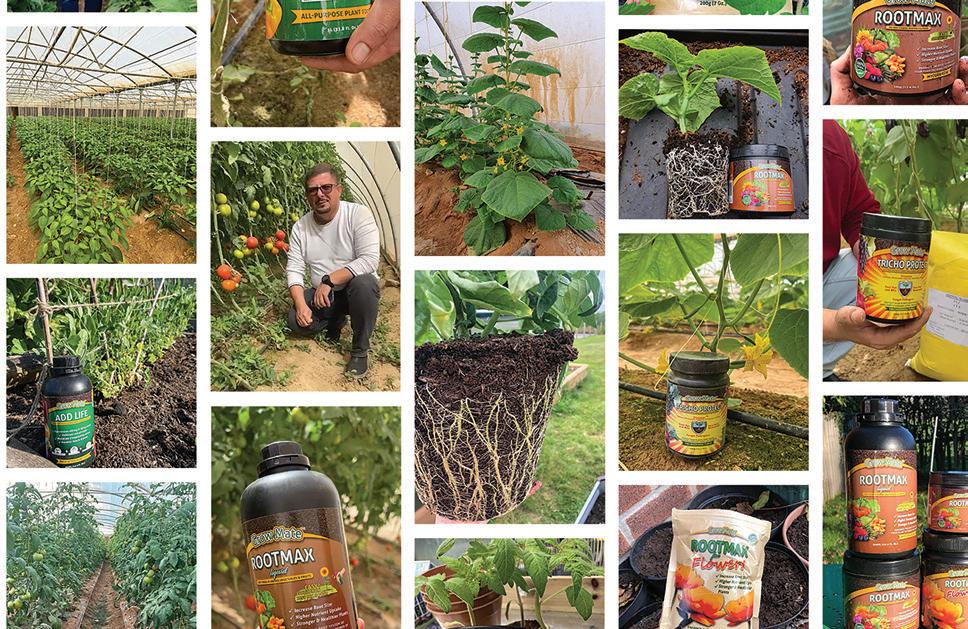
industry experts, mentors, investors, and potential partners within the agtech ecosystem. The program offers a structured framework to help accelerate our growth, validate the business models, and access funding opportunities. Being part of the program provides us with the valuable support, connections, and resources we need to accelerate growth.
If our microbial products were to be globally adopted, it would have significant impacts on agriculture and the environment. In agriculture, microbial solutions enhance crop productivity, improve soil health, and reduce reliance on chemical inputs like fertilizers and pesticides. This would contribute to global food security, promote sustainable farming practices, and mitigate environmental impacts. Microbials also play a crucial role in environmental conservation by aiding in wastewater treatment, pollution control, and bioremediation, leading to the degradation of harmful pollutants and restoration of ecosystems. Universal adoption of our microbial solutions could combat pollution, restore habitats, and promote a cleaner and healthier environment overall.
Incorporating growers into our business plan is integral to our approach. At UM, we prioritize a collaborative approach, actively
seeking input from growers and involving them in decision-making processes. Through needs assessments, field trials, and pilot programs, we tailor our products and services to address growers' specific pain points and requirements. We offer educational resources and ongoing technical support to empower growers and maximize the value of our offerings. By establishing feedback loops and fostering long-term partnerships, we continuously gather input, address concerns, and evolve our solutions to meet growers' evolving needs. This customer-centric approach ensures that growers are at the heart of our business, creating a mutually beneficial relationship that drives our success and supports the success of growers.
In 10 years, Universal Microbes envisions itself as a leader and innovator in the microbial industry, making significant contributions to sustainable agriculture, environmental conservation, and other sectors it serves. With an expanded product portfolio, Universal Microbes aims to offer a broader range of microbial solutions that address various global challenges.
UM strives to establish a strong global presence, building a widespread network of partners, customers, and collaborators across different industries and regions. The company aims to be recognized as a trusted and reliable partner, renowned for its high-quality products, scientific expertise, and exceptional customer service.

In terms of impact, UM aims for its microbial solutions to play a pivotal role in addressing critical issues like food security, environmental degradation, and resource sustainability. Through innovative products and sustainable practices, we seek to transform traditional approaches and promote a more resilient and environmentally friendly future.
Continued investment in cutting-edge technologies, scientific advancements, and strategic partnerships will drive Universal Microbes to push the boundaries of microbial research and development. This commitment to continuous innovation will unlock new potential in the field of microbial applications.
Ultimately, Universal Microbes aspires to lead the microbial revolution, driving positive change and shaping the future of industries through the power of beneficial microorganisms. By leveraging its expertise, fostering industry collaborations, and maintaining a customer-centric approach, UM aims to position itself as a trusted leader and trailblazer in the microbial industry, delivering sustainable and impactful solutions that benefit society and the planet as a whole.
By participating in Plug and Play's North Dakota Agtech Program, what do you hope to accomplish? Have you considered expanding your operations to the Upper Midwest?
By participating in Plug and Play's North Dakota Agtech Program, UM hopes to accomplish various objectives. These include validating our business models, accelerating our
growth, accessing expertise, and networking with industry experts, mentors, investors, and potential partners in the agtech ecosystem. Additionally, we may consider expanding our operations to the Upper Midwest to tap into the agricultural ecosystem, conduct pilot programs and field trials, and cater to the specific needs of growers in the region.
This magazine reaches 16,000+ farmers. In one or two sentences, what would you like to tell them?
Attention, farmers: if you're not utilizing our microbes on your farm already, it's crucial to know that you're overspending on chemical fertilizers, compromising your soil health, increasing susceptibility to infections and pests, and potentially yielding less nutritious crops. Explore the transformative power of Universal Microbes to optimize your farming practices, promote sustainability, and unlock the true potential of your harvest.




Lending in agriculture is expensive and risky because it's hard to know if the value of the crop will cover the loan repayment. FastFarm solves this problem by turning daily satellite imagery into a prediction of how much a field will produce. This way, lenders and farmers can make safer decisions because they know what's happening on the farm in real time.
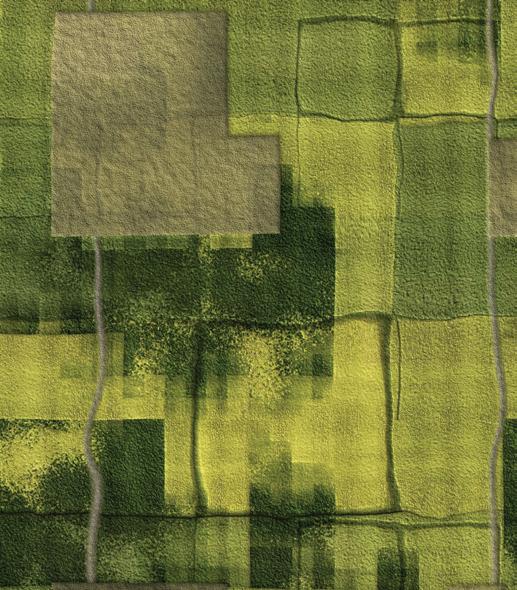
We charge a fee per acre for this service. Banks, co-ops, and retailers in Mexico are already using our system to make loans, and farmers are seeing the benefits. We're constantly adding new tools to our system that help manage risks like price changes and sustainability issues. Ultimately, we aim to make agricultural loans safer, easier, and more sustainable across the globe.
I [Founder and CEO Luis Lascurain] have always been close to farming because of our family ranch, and I studied chemical engineering to get involved, but my career initially took me into finance. It was when I
came to the US for my MBA and MS at Stanford that I started working in agricultural technology. I soon realized that the main obstacle to adopting new technologies in farming was a lack of investment. This lack of investment often stemmed from the high risks associated with farming—risks that were hard to predict or manage.
I started brainstorming ways to reduce this risk and realized that data was the key. If we could get accurate, real-time data from farms, we could understand the risks better and make safer investments. But traditional ways of gathering this data were costly and disruptive.
That's when I thought of using satellite images. Growing crops is essentially a biochemical reaction, and these images can tell us how well that reaction is going. With this information, we can estimate the costs and risks of a farming operation without ever setting foot on the field. That's how FastFarm was born. We use satellite imagery to make farm loans safer and more accessible, ultimately helping farmers adopt the technology they need to thrive.

Being a part of Plug and Play's North Dakota Agtech Program has been incredibly beneficial for FastFarm. It has opened doors to networking with large companies

and provided us with key resources and mentorship that have shaped our business strategy. One of the most valuable insights has been understanding the unique lending needs in the US agricultural sector, which differ from those in Mexico, where we currently operate. This experience has not only broadened our market understanding but has also equipped us with the knowledge to tailor our solution to different markets. Overall, it's an opportunity that has accelerated our growth and potential for expansion.
If your product/service was already being used by everyone globally, what impact would that have?
If FastFarm were used globally, it could significantly increase investment in agriculture, leading to improved crop yields. We believe that many farmers aren't investing as much as they could in their fields due to financial constraints, which results in lower yields.
By reducing the risk and cost of lending, our service would make it easier for farmers to access funds for investment. This wouldn't just be for new, untested technology but for proven, existing methods that farmers may have been unable to afford before.
The widespread adoption of FastFarm could therefore play a pivotal role in increasing agricultural productivity worldwide. This could lead to increased food security, greater economic prosperity for farmers, and a more sustainable future for our global food system.
Growers are indeed at the heart of our business plan. This season, we are collaborating with our lender customers to introduce our product to their growers. The reason is simple: growers are the primary investors in crops and stand to gain directly from our service.
We are designing our product to offer meaningful insights to growers that can help them make smarter investment decisions. After all, when a grower makes good use of a loan, repayment is more likely.
Furthermore, we are actively seeking and valuing feedback from growers. This feedback not only ensures our product aligns with their needs but also guides the development of new features and enhancements. In this way, we ensure growers are not just beneficiaries of our service but are also active contributors to its ongoing development and success.
In 10 years, we aim to become the preferred platform for lenders and growers across the globe, offering indispensable tools to manage their investment and production risks efficiently.
We envision our product offerings to evolve significantly. Our plan includes the incorporation of advanced risk management tools, which will do more than just monitor crop health. We aim to tackle market uncertainties by helping our users leverage our harvest volume predictions to actively hedge against volatile crop prices, offering them greater stability and predictability in their operations. Sustainability is another cornerstone of our future vision. We're developing mechanisms to monitor carbon credits and use them
as collateral, promoting financial incentives for sustainable farming practices.
Ultimately, FastFarm is about more than building a successful business. We're creating a platform that ushers in enduring, positive change in the agricultural sector worldwide.
By participating in Plug and Play's North Dakota Agtech Program, what do you hope to accomplish? Have you considered expanding your operations to the Upper Midwest?
Indeed, we are considering expanding our operations to the Upper Midwest. However, before we do, it's essential that we tailor and refine our product to effectively address the unique challenges specific to that region.
Through our participation in Plug and Play's North Dakota Agtech Program, we aim to gain a deep understanding of the contrasts between agricultural lending in Mexico and the US. The presence of robust crop insurance in the US, for example, significantly alters the lending dynamics. Our goal is to leverage the insights and network provided by the program to learn how best to navigate these differences.
In essence, we view our involvement in the program as a key step in our learning journey, helping us prepare for potential expansion and ensuring we can provide the most effective solutions for each unique agricultural context we encounter.
This magazine reaches 16,000+ farmers. In one sentence, what would you like to tell them?
At FastFarm we believe investment is the best fertilizer. We're dedicated to becoming your trusted partner in increasing your farm's financial stability and productivity by providing innovative, datadriven solutions that help you manage risk, access loans more easily, and invest sustainably in your fields.

TrueAlgae’e elevator pitch:
TrueAlgae is pioneering the new frontier of metabolite research and development for agriculture. We are not an algae company. We are a metabolite company focused on the vast array of benefits that these tiny molecules can bring to agriculture.
Every living thing produces metabolites, and the interaction of metabolites with the environment is critical to the survival of these same living beings. Microalgae are a natural factory for a diverse range of metabolites. We envision an algae-derived platform of metabolite products to address a variety of needs in agriculture.

TrueSolum®, our first product, is an organic and proprietary metabolite blend expressed by the algae as it grows. We separate the biomass from these useful metabolites and provide this blend to farmers for use in their fields. These metabolites stimulate the natural microbial activity in the soil by signaling bacteria and fungi to release key macro and micronutrients that are sometimes bound in the soil and unavailable to the crop. TrueSolum enhances the proliferation of specific beneficial microbes
by up to 1,000%. Field trials in 2022 demonstrated that TrueSolum consistently increases nutrient uptake of phosphorus, iron, zinc, and magnesium by over 20%.
How did you get the idea to start your company?
TrueAlgae believes algae-derived products can provide sustainable solutions to many of the world’s problems. Our interest in agriculture comes from being algae farmers and the understanding that the same valuable metabolites that algae produce to support its own growth and health can also be used to do the same for the microbial community in the soil. TrueAlgae can manipulate the metabolite mixture through environmental changes such as temperature, nutrient deficiencies, and other stressors. These same compounds will support the soil microbiome and the crop in similar changeable environmental conditions.
What does it mean to be a part of Plug and Play's North Dakota Agtech Program?
Plug and Play provides a vast array of opportunities to interact with other companies in the same program, learn from experts through the workshops, and network with potential industry partners. It is a fantastic way to grow our presence in agriculture.
If your product/service was already being used by everyone globally, what impact would that have?
Our product, TrueSolum, improves the capabilities of the natural soil microbiome to release, assimilate, and support the uptake of particular nutrients by the crop. By restoring the soil microbes to a more natural state of activity, agriculture becomes less dependent on artificial or chemical inputs to support crop growth and health.
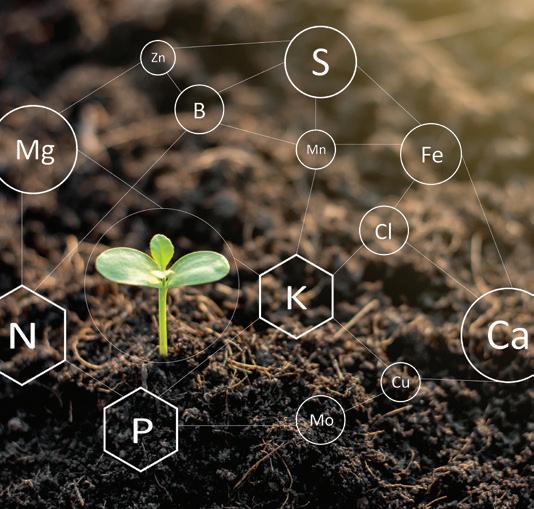
How are you incorporating growers into your business plan?

TrueAlgae works with growers by performing field trials to prove the value of TrueSolum. Through this process, we learn about best practices of growers and how we can improve our product to better fit into their normal farming operations and budget. We also work with growers to understand what challenges they are facing that are not being addressed with the current products on the market. This information provides a basis for our product development work.
TrueAlgae's plans are to partner with established companies in the industry where TrueSolum, and our algae-based metabolite platform, can complement and enhance their product offerings. The possibility exists for strategic investments and/or acquisition by one of these companies.

By participating in Plug and Play's North Dakota Agtech Program, what do you hope to accomplish? Have you considered expanding your operations to the Upper Midwest?
TrueAlgae initiated field trials in row crops in the Upper Midwest in 2022 with positive results, particularly in corn. We are repeating those trials this year and with positive results, plan to begin marketing TrueSolum in the region. With Plug and Play's network, we hope to attract appropriate partners for these endeavors.
This magazine reaches 16,000+ farmers. In one sentence, what would you like to tell them?
Let's work together to restore the soil's natural microbiome to improve nutrient uptake efficiency and crop performance.
 By Sam Kise
By Sam Kise
f you are a producer who is interested in grassland conservation and enhancement and are looking for ways to improve your operation in North Dakota, you may be facing one of two conundrums: either you have too many support resources and you can’t sort through them all, or you can’t find enough resources to help you on your conservation journey. Luckily for you, there is
a new statewide initiative designed to assist in connecting landowners and producers with the variety of programs that offer assistance. The Meadowlark Initiative offers personalized referrals to the services, organizations, and programs that will best fit you and your land’s needs. I sat down with Meadowlark Initiative coordinator Heather Husband to learn more about how the Meadowlark Initiative can benefit those in the ag industry in our region and beyond.
The North Dakota state bird, the western meadowlark, relies on managed native grasslands to survive.Created in 2022 by North Dakota Game and Fish in coordination with many conservation organizations across the state, the Meadowlark Initiative promotes efforts of conservation, restoration, and revitalization of grasslands in North Dakota. According to the Meadowlark Initiative’s website, this is accomplished by “tapping into the collective insights, resources, and efforts of conservation, agriculture, and industry partners to enhance, restore, and sustain native grasslands in North Dakota.” Their ultimate goal, as stated on their website, is to “promote and create healthy, thriving grasslands that provide biodiversity and prosperity for wildlife, pollinators, ranching operations and communities by supporting ranching, establishing grasslands, offsetting developmental impacts, promoting societal benefits, and advancing science and education.”
The Meadowlark Initiative strives to encourage conservation of grasslands throughout North Dakota by linking landowners directly with organizations that can help with conservation efforts.

While wanting to improve or restore grasslands in a state with a strong prairie heritage is a noble and worthy cause, often it’s hard to know where to start. There are so many resources out there, it’s difficult to know which
organization will offer you the most help for your land’s needs. That’s where Heather Husband and the Meadowlark Initiative step in.
“In order to keep the grasslands that we have really resilient and diverse, there are a lot of conservation programs out there that can help our producers, both by increasing profitability [of their land], and then–aligned with the Initiative’s mission–[by helping] protect the grassland resource for wildlife,” Husband said. “We are in a really amazing time of having a significant amount of financial and technical assistance available in conservation. For the landowner, it can be very confusing and timeconsuming to search through it all.”
The purpose of the Meadowlark Initiative is to understand your needs and to have someone with a knowledge of the possible grassland resources available in North Dakota recommend services or organizations that will help you—the landowner—the most. Through the initiative, landowners will discuss their goals for their land with Heather. She will then gather information and compile options, providing the landowner with referrals to resources that will help transform their land into thriving grasslands for wildlife, pollinators, ranching, and more.
Though many landowners would love to help with grassland conservation efforts, doing so often doesn’t seem profitable. It costs a lot of money to convert idle grassland into working
livestock operations or to plant grass and maintain it in a way that is beneficial for both you and the wildlife, so it may often seem like the wrong move for your business. While there are plenty of resources to help you with the specifics of conserving your grasslands, it can be hard to find the funding needed for the infrastructure and management to conserve or restore your land. The Meadowlark Initiative coordinator is your one-stop shop to help you reach your goals for your operation and land.
“That's a really big part of it—working with landowners and producers that are interested in restoring and enhancing their grasslands to try and eliminate some of that time and frustration that comes along with the search for financial and technical assistance,” Husband said. “They have one person they can go to when looking for something new who will know them. And if the first offer doesn’t meet their needs, or if they have new ideas, I can be there to keep the process going. I am also listening for situations that don’t currently have assistance. I take those ideas back to the partners so we all can try and develop new programs to meet the landowners' needs.”
While you likely know that conservation and restoration of grassland is good for wildlife, you might wonder—what’s in it for you? One thing that grassland does to help farmers and ranchers is improve water quality on your land. It can reduce runoff and filter out
The ring-necked pheasant is another species that benefits from working grasslands.

contaminants that might get into your soils. This not only improves water quality, but soil quality, too. If you operate near a body of water or on wetlands, native grasslands can also help improve that water’s quality.
“While the primary focus of the strategy is on grasslands, we also work a little bit with wetlands and riparian areas. If you have some buffer strips in the area, we are looking at how that is improving water quality. And if you put in tanks for livestock, and you're moving them off of a river or other body of water, not only do they get cleaner water, but then it kind of protects the riverbank a little bit more as well,” Husband said, speaking of the Meadowlark Initiative’s water quality research project.
Due to the decline of grasslands in North Dakota, it is also becoming harder to maintain ranches in the prairie state. According to the Meadowlark Initiative website, “the number of U.S. cattle ranches is declining 1% per year.” Without grasslands, there are not as many food sources for the cattle. By protecting the existing grasslands and revitalizing them, the cattle ranches will begin to thrive again. If you currently own a cattle ranch, the Meadowlark Initiative can refer you to resources that can help improve your grassland’s quality and maintain grazing patterns with your current livestock that are conducive to grassland plant diversity and resilience, especially in times of drought.
Aside from improving water quality, native grasslands help humanity as a whole, too. Restoring or conserving native grasslands can have an incredible impact
on the environment. For example, native grasslands are great at removing carbon from the atmosphere because they store and use the carbon to grow.
“You always hear about how the rainforest is important for carbon sequestration. But grasslands are even more amazing at storing carbon. With native grasses and forbs, their roots are five to fifteen feet deep or more. Through the process of photosynthesis, plants remove carbon dioxide from the air and use it for growth, especially the root mass. The root mass of our native prairies are a real powerhouse,” Husband said.
Grasslands are connected with all of our water, soil, energy, and food here in the prairie state, and maintaining them helps your land and your neighbors.
While the Meadowlark Initiative was created for North Dakota, many of the resources they use come from national or international organizations. Husband said she would never turn away a landowner if they wanted her help, and she would be happy to refer them to resources that may be available in their area. The hope, though, is that one day each state will have their own similar initiative to assist landowners with restoring their natural resources. That way, the help would be specific to each state’s environment.
Conservation, ranching, and farming organizations around the state of North Dakota all partner to bring resources to North Dakota landowners through the Meadowlark Initiative. Here are what some of the partners are saying about this great new resource and the importance of grasslands for farmers, ranchers, and our wildlife:
"In my mind, the Meadowlark Initiative couldn't have been named more perfectly. Because the Meadowlark is the North Dakota state bird, it is also the most honest and true indicator of the health of North Dakota's grasslands. As both a rancher and mentor for the North Dakota Grazing Lands Coalition, I believe that we need to work extremely hard at keeping grasslands the right side up. Without healthy grasslands, we compromise both the health of our livestock and the health of our families."
-Trish Feiring, Field Representative, North Dakota Grazing Lands Coalition“Audubon Great Plains is a proud partner of the Meadowlark Initiative as it provides producers improved access to financial support for regenerative and adaptive land management, while also increasing accessibility to conservation professionals who prioritize partnering with producers to conserve our state’s unique natural heritage.”
-Sarah Hewitt, Director of Conservation, Audubon Great Plains
Working grasslands keep native prairies and North Dakota’s ranching heritage on the landscape.

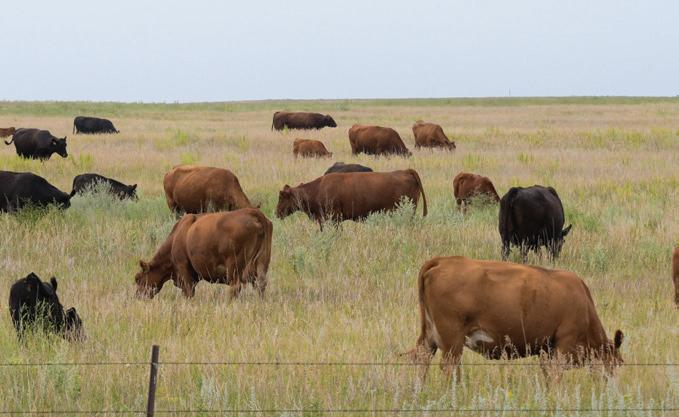
“It’s refreshing to see the level of interest in North Dakota prairies from all walks of life: ranchers, birders, homeowners, conservation and agricultural groups, and state and federal agencies. It really feels like there is momentum and these groups are pulling the rope in the same direction when it comes to restoring, protecting, or enhancing prairies and the ranching heritage in North Dakota.”
-Kevin Kading, Private Lands Section Leader, North Dakota Game and Fish Department“When it comes to efforts for keeping our native grasslands intact, healthy, and thriving… in essence, it’s really about keeping our own health, heritage, well-being, and livelihoods intact. It’s not really about a conservation ethic, after all… it’s about ‘us.’ Our communities… our lives… they’re truly enriched by, and ultimately rely upon, the products our prairies and our ranchers provide. Take away clean water, productive pollinators, cheerful bird songs, healthy soil, locally-produced food, stable climates, and economic diversity—what have we got? It’s not surprising, once realized, that there’s collaborative buy-in. It becomes obvious we need to work together to take care of this natural fabric that ties it all together.”
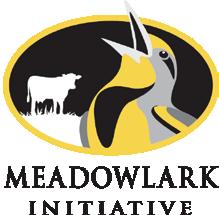 -Greg Link, Chief, Conservation and Communication Division, North Dakota Game and Fish Department
-Greg Link, Chief, Conservation and Communication Division, North Dakota Game and Fish Department
For over one hundred years, farmers have relied on tools and machinery that use tough metals to mix and dig up soil for planting season. This digging process ruins soil in many ways—one of those ways being compacting top soils. Susterre, an agtech company based out of Toronto, Ontario, Canada, believes they have created a technology that will not only push through that soil compaction, but eliminate the need for tilling permanently. I discussed the new water jet planting technology with CEO and Founder of Susterre Michael Cully, and he
Formed only a few years ago in 2020, Susterre is quite a new face in the agtech industry. However, despite being a newly-formed company, the prototypes for Susterre’s products have been around for quite some time. CEO Michael Cully explained that originally a smaller company owned the technology that Susterre is now working to perfect. He got involved with the technology because a venture capital fund out of Calgary that sought out agtech opportunities asked him to use his business background to help bring this product to market.


“[The previous company to work on this product] had done about four rounds of prototyping, but they didn't have the resources to bring it to market. The venture capital fund went out and headhunted for [someone like] me. They found me and asked me if I would be willing to form a new company in order to bring this to market. So that's what I did. I purchased the intellectual property from the previous company, and in exchange, they own a portion of the company,” Cully said.
Cully’s background in the agriculture industry and in the business sector
made him the perfect candidate to take on this new role with Susterre. Prior to founding this company, he held positions at businesses like AGCO Corporation and GROWERS, both prominent ag-focused companies.

“I worked for AGCO Corporation, which is a major manufacturer of farm equipment globally, for 17 years,” Cully said. “I also have a background working for a startup company. So with my ag machinery background and my startup background, they thought it'd be a good opportunity for me to head this company.”
Since Cully started the company, Susterre has made strides toward being able to manufacture products on a larger scale so that they can sell their products. Cully noted that “[they] finally got [their] first round of funding in January 2022.” This funding allowed them to be able to start producing commercially-sized products and test them in real field conditions.
The goal with most new agriculture technology is to improve the farmer’s
explained to me how it works, what benefits it will have for farmers, their plans for further research in North Dakota in partnership with Grand Farm, and more!
“Susterre is pioneering the use of ultra-high pressure water jets in row crop planting applications. [Their] technology promotes regenerative practices like no-till farming and cover crops on a permanent basis, lowers the costs of planting, and adds time to the farmer's planting window.”



“Susterre’s new technology will enable conservation tillage to realize its full potential by:
• Creating agronomic and cost benefits for farmers currently practicing no-till farming, directly mitigating the current issues associated with no-till farming.
• Providing a lower-cost entry possibility for farmers that have not adopted no-till practices.”
- From Susterre’s Website, susterre.com
day-to-day life. Susterre’s goals are no different—they want to help the farmer plant crops more efficiently and effectively.
“Our goal with the company is to make it easier for farmers to use regenerative crop practices like no-till farming or the use of cover crops. Both practices have a lot of benefits environmentally and economically for the farmers. But the difficulty is that both practices come with crop residue, and the crop residue builds up over the seasons,” Cully explained. “It becomes more and more difficult for today's planters to cut through it and put the seed in the ground at the right depth.”
Due to the difficulties that come with regenerative farming practices, farmers often can only go a few years in the practice before having to resort to tilling again to cut through the crop residue. Susterre’s technology aims to cut through that crop residue to plant deeper in the soil without the harsh tilling machinery that’s typically used.
“We're using ultra-high pressure water jets, which pump water at around 60,000 pounds per square inch. Just to give you a point of comparison, a power washer that you would use on your driveway is about 4,000 pounds per square inch, maximum.
This is way more pressure,” Cully explained. “In industrial manufacturing, these jets are used to cut through metal in precise patterns. We're taking those, and we're applying them to row crop applications, with the theory that if the jets can cut through metal, they can pretty much cut through anything.”
These water jets cut through the crop residue in order to allow seeds to be planted at the ideal depth for the most successful growth. What’s even better: a farmer can use fertilizer in the technology rather than just water, encouraging even more growth in their newly planted seeds.
“The fluid that we use doesn't have to be water, it could be starter fertilizer that the farmers are putting down when they plant. We can run that through the system, and then the fertilizer cuts through the residue and we inject it into the soil about four inches deep,” Cully said.
The technology that Michael Cully and Susterre are pioneering is, hopefully, going to make sticking with regenerative farming practices a lot easier—both physically and financially.
“The idea is that we're going to make it a lot easier for farmers to stay in these
While the average person may associate the word “residue” with negative things, crop residue is actually great at preventing soil erosion! Keeping crop residue intact in your fields may help the growth and yield of your crops throughout the year.
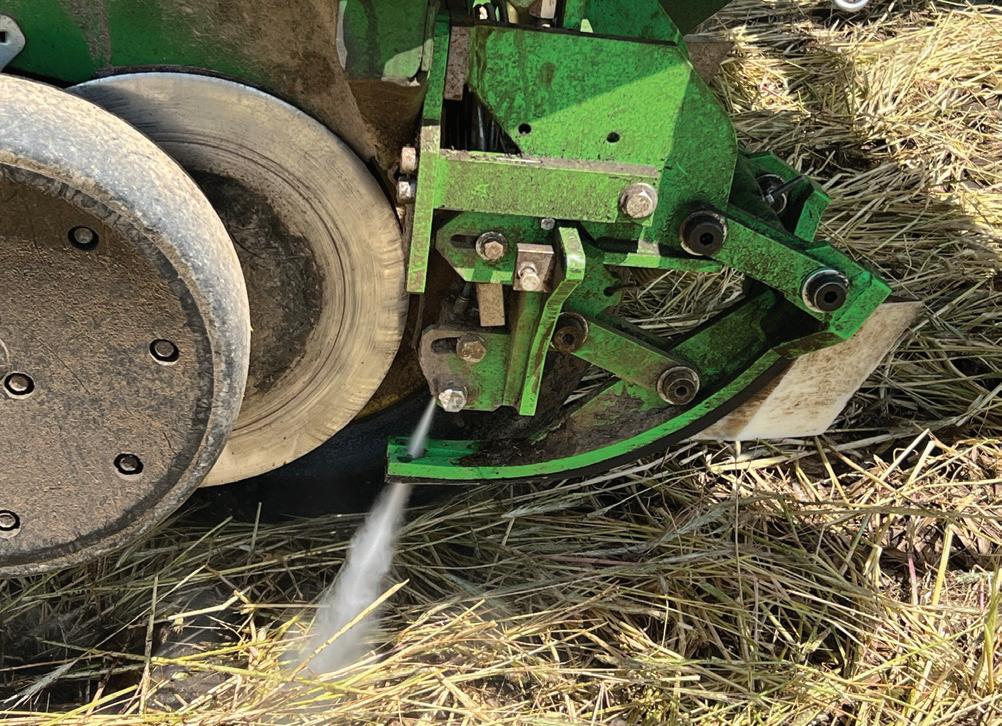
Since their initial round of funding in 2022, Susterre’s focus has been on testing to ensure that their products will be beneficial enough for farmers that they will be willing to not only mentally but financially invest in the product.



“In 2022, Susterre tested in eight different field conditions in three states and the province of Ontario, Canada. We were pretty excited about what we learned. In our testing, [we saw] two specific benefits that we weren't sure we would find,” Cully said. “The first is that we were able to increase yields for the farmers anywhere from 6% to over 12%. The second is that we also noticed that we could plant in what I would call ‘unplantable’ conditions, like when the soil is ultra-compacted and hard to plant into. We've noticed that the product works really well in very tough conditions.”
But these are not the only discoveries that Susterre has made in their recent testing
and research. Cully also explained how the high-pressure water jets in Susterre’s technology can give farmers extended plant time each season, giving them more of a chance to yield successful crops.
“In the spring, farmers have tended to have to wait for the fields to dry out to go out and plant. Our technology cuts well in wet conditions. So as long as a tractor can go out on the field, we can be out cutting and preparing the fields to plant,” Cully said. “In North Dakota, you probably have ten days to two weeks to plant, so every hour that we can give back to the farmers would be great for them in terms of either helping reduce risk or even planting more acres than they currently plant today.”


Susterre was part of a Canadian agtech accelerator program through the Canadian Consulate that invited companies to speak to Grand Farm's agricultural partners— which is how their partnership with Grand Farm got started!



Through their partnership, Susterre will be field testing their products on five acres of land at Grand Farm’s Casselton innovation site. Grand Farm has also facilitated some testing on a few farmers’ lands south of Casselton. Cully said of the Grand Farm team: “They have been really helpful in making sure that I had a good start in North Dakota.”
Cully also said that this year, with the growth of the business, he has plans to hire more to the North Dakota-based Susterre team— possibly including an intern in the mix!
“My intention this year is to hire a summer intern to help me do marketing events this summer. As soon as we get an order for a unit, I'll be hiring probably at least one or two permanent employees to come and live in North Dakota. We won’t be here for only one
Susterre’s products can be installed onto the planters you already own, making the transition to using the technology even easier.




According to the USDA’s Economic Research Service, over 13.5 million households in the US were food insecure in 2021. That is over 10% of the country’s population that was uncertain about or unable to acquire food at some point in the year. Yet, despite the number of foodinsecure people in the United States alone, more than 15% of the world’s produced food is wasted every year—and not all of that is food that’s thrown away at home. In fact, a lot of the food produced by farms each year never makes it to the stores—often due to market conditions, the size, or the appearance of the product.


With so much food never making it to market, the everyday person might wonder where that food goes if it doesn’t feed people. It would be sad to waste food if it is still perfectly edible. That’s where food banks come in.
I spoke with Heidi Coe and Samantha Solberg of the food bank Second Harvest Heartland (Brooklyn Park, MN), Nikki Warner of the food hub The Good Acre (Falcon Heights, MN), Bjorn Solberg of organic produce marketer Hugh’s Gardens (Halstad, MN), and Kramer Stuth and Jared Slinde of the Great Plains Food Bank (Fargo, ND) to discuss what their roles are in getting locally grown produce to the tables of those in need. We also discussed how the hunger relief system works, what happens to the food during the donation process, and why it might be beneficial for you, as a grower, to donate produce to their organizations.
Second Harvest Heartland’s donated produce includes a variety of different kinds of fruits and vegetables, like lettuce, apples, potatoes, onions, carrots, and more!
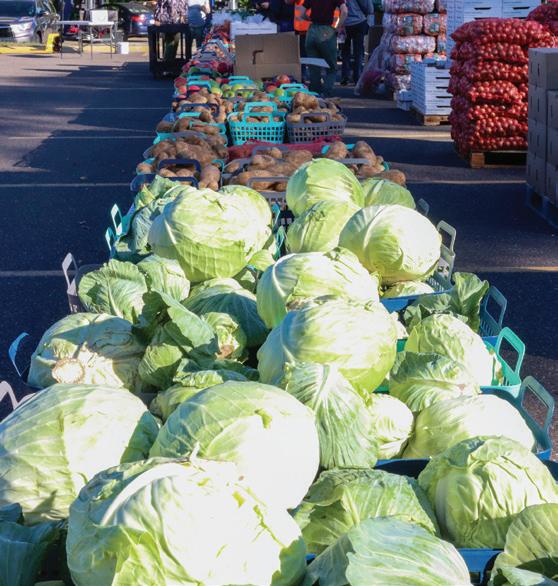

In speaking to a variety of sources, I came to see just how complex the hunger relief system can be. Food banks, food hubs, distributors, and food pantries/shelves all operate in different ways to help get the food distributed to food-insecure households, and each has a different relationship with local, regional, and even national growers.
At the top of the distribution chain are food banks. As Heidi Coe, produce sourcing specialist at Second Harvest Heartland, describes it, “You can picture the food bank as the warehouse or the distributor. We bring in millions and millions of pounds [of produce] that are distributed out to our agency partners, [the food shelves]. [Those food shelves] are where the people go to get the food.” These food banks are typically the ones working directly with the growers to bring in large amounts of produce to distribute across their region.
Food banks are also often responsible for a huge service area, and the Great Plains Food Bank (GPFB) happens to service the entire state of North Dakota along with Clay County in Minnesota. Kramer Stuth, logistics manager at GPFB, said of the food bank, “We have a very large service area of over 70,000 square miles. That presents us a very unique opportunity to be able to serve our clients because we have the city areas of Fargo and Bismarck to serve, but we also have the rural areas and neighbors to serve as well. We have very diverse areas that we serve.” Food banks are just the beginning of distribution to the people in our communities, though.
Food hubs are another part of getting fresh produce to food pantries. They work a little differently than a food bank, and usually on a smaller scale. According to Nikki Warner, communications director at The Good Acre, these hubs are focused on getting farmers’ products to people and places that can distribute them.
“The USDA definition of a food hub is basically ‘an aggregator that handles marketing, logistics, and aggregates products of the farm to meet the demand of larger wholesale buyers,’” Warner said. In addition to the typical food hub responsibilities, The Good Acre is also “focused on market expansion and technical assistance, like one-onone grower support.”
Produce marketers like Hugh’s Gardens are often the middlemen in the farm-to-food bank food chains. Bjorn Solberg, the owner of Hugh’s Gardens, described his process as a produce marketer to me.
“We have two farmers currently that grow the potatoes and then haul them to us. From then on, we’re in charge of storage, washing, packaging, and marketing. I market at a wholesale level, so I sell mostly to distributors in the cities, but some are also sold directly to schools and directly to consumers through the Red River Harvest Cooperative,” he said.
Despite the common view that donated food is mediocre, Second Harvest’s donated produce is always of high quality, like the tomatoes seen here.
Facilities like Hugh’s Gardens help to bring the products to market more smoothly, which also includes

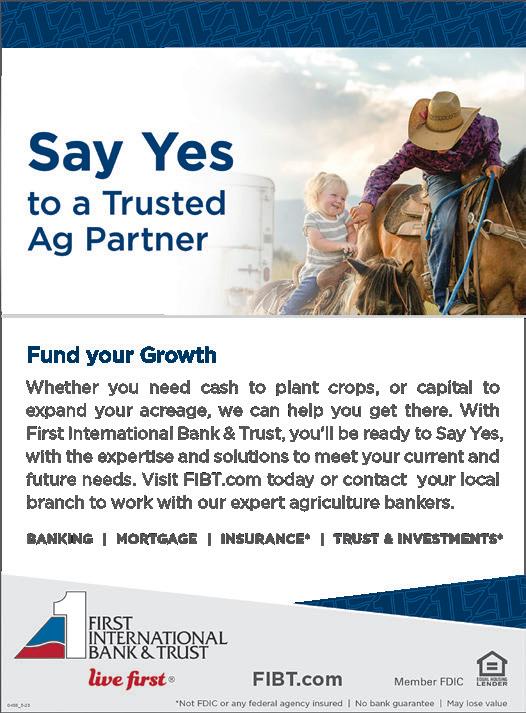


sorting produce that may not do well in the market and sending it to food banks to minimize food waste and help food banks provide more produce.
At the local level, food banks like Second Harvest Heartland and the Great Plains Food Bank provide their sourced produce to local food shelves or food pantries for consumers. All of the work that food banks, food hubs, and marketers do for hunger relief culminates at the food shelf.
When speaking to those involved in the food donation process, a common thread that came up was that these food banks will take any amount of edible produce that a person could provide, whether it’s a bag full or a semi-truck full.
Stuth noted that with North Dakota’s Hunger Free ND Garden Project—a project that asks local gardeners and farmers to plant an extra row or acre of produce with the goal to donate the high-quality product to the hunger relief system—the food bank has been able to source even more produce.
“That [produce] comes from a variety of different types of growers,” Stuth said. “It could be somebody that just has produce from the store
or is growing some tomatoes in their backyard or something along those lines, all the way up to a full-fledged farmer that has acres upon acres of potatoes or onions that they're planting.”
Coe added that, instead of bringing every single donation to the Second Harvest donation center, sometimes those small donations go straight to the food shelves that need them in the donor’s area.
“If we do get a call from a grower who's got a smaller amount [of produce], it would cost a lot to bring that to the distribution center. In that situation, I connect them with their local food shelf,” she said.
Once the food bank gets the food, they move it out as quickly as they can so that none of the produce goes to waste.
“We store it very well, and we like to turn it over quickly,” Coe said. “We don't like to call ourselves a warehouse because we're not warehousing food, we are just distributing. We bring it in, then immediately move it out. Our food shelves and other partners order the produce, and then within two to four days, we move that product out to them.”
Stuth agreed, saying that “as soon as we pick it up, it's going to be out of our warehouse within less than a month depending on what type of product it is and how long it can be safely stored.”

With the quick turnaround time for distribution, and the food banks’ willingness to take in any amount of produce, it becomes a lot easier to see the benefit of donating.
The Good Acre’s top-quality crops from local farmers of color and emerging farmers provide a much-needed diversity in donated produce, while still producing staples of the Midwest like potatoes and onions.
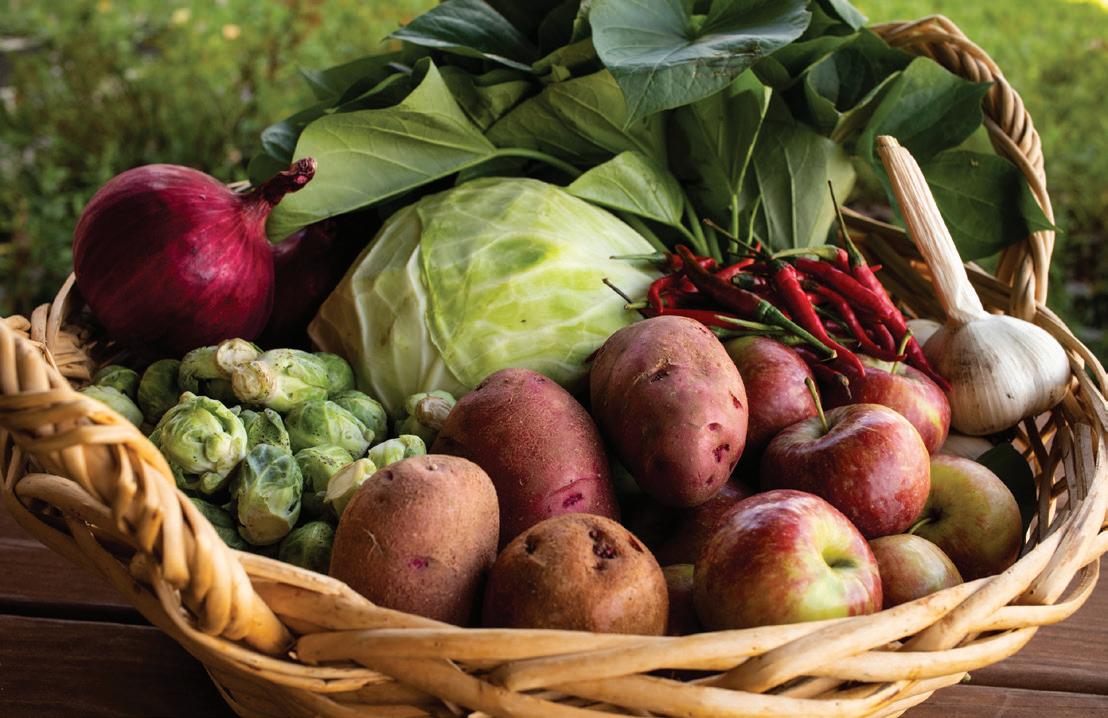
Despite the surplus of edible food, some growers do not consider food banks, hubs, shelves, and pantries to get their produce to tables. However, when a grower partners with a food bank or a food shelf, it doesn’t only help the person receiving the food.
A big part of the appeal of a partnership with a food bank is cutting down on food waste. No grower spends so much time in the field and then is content when they cannot get it to people’s tables. A common theme when I spoke with those involved with food donation was how partnerships with food banks help not only utilize the unsaleable produce, but cut down on how much unsaleable produce the farmers have to figure out what to do with.
“It’s really beneficial for helping us limit the amount of waste that we need to be getting rid of, and helps turn it into a benefit and getting it into the right people's hands,” Solberg said.

To help counteract the potential costs of donation, most food banks will pick up the produce at the farm and haul it to the distribution warehouse, cutting down on the grower’s transportation costs significantly.
On this point, Stuth said, “We have three semi-truck drivers that cover the whole state of North Dakota. We're constantly out and about throughout the state. If you’re a donor that's out in western North Dakota and wants to donate some product, we will have a truck out in that area at least once a month, so we'll be able to coordinate a pick-up then. If it's something that is a little bit more urgent to pick up, we can always send out trucks for special trips.”
An added benefit to the partnership that has come about in more recent years, food banks in many areas are now receiving funding (or designating funding) to reimburse those who donate produce. The USDA and state departments of agriculture have been allocating more funding to food banks to spend on locally produced food, which includes locally grown produce. Each state is different in regard to what the money can be used for, but funding is either used to outright purchase produce from growers or to reimburse the costs associated with donating. In Minnesota, they are able to provide reimbursements through the Farm to Food Shelf grant.
“We're pretty clear about how we don't purchase produce—it is donated, and we reimburse the growers,” Coe said. “We call it PPO, which stands for Pick and Pack Out. It means we're reimbursing for some of the labor costs and some of the packaging costs, but not all of it. We have a sheet with rates for the different produce types and how they're packaged.”
“It’s really beneficial for helping us limit the amount of waste that we need to be getting rid of, and helps turn it into a benefit and getting it into the right people's hands,” Solberg said.
Second Harvest also sets aside its own funding to purchase directly from farmers of color who provide more unique crops that support the diverse culture of the Twin Cities area and beyond. This is where their partnership with The Good Acre comes into play.

“Second Harvest pays market rate for [produce from our BIPOC farmers]. Wholesale market prices—fair wholesale prices that we agree upon, usually at the beginning of the season,” Warner said. “We don't donate produce to Second Harvest Heartland because our values align, and they want to make sure that they are creating market opportunities for BIPOC farmers as part of their values around addressing the hunger divide.”
In North Dakota, the funding for the Great Plains Food Bank from the Department of Agriculture can be used for all kinds of locally grown or produced foods, but a large portion of the funds are being spent buying directly from growers in the state. Right now, they are only in the second quarter of grant funding—but they’ve already started building strong connections with local growers.
“This has been a fantastic partnership with the Department of Ag, as well as with the growers and producers, because we're able to bring in local, fresh products and distribute that throughout our network of partners at no cost to them,” Stuth said. “Being able to source local product to put money back into the economy, but to also have those main food staples at no cost for our partners and for people that actually need it, has been wonderful.”
Along with the funding directly from food banks, some growers might receive additional benefits via their taxes. Though the organizations I spoke with are not able to give tax advice—and neither am I—a few brought up the potential for tax breaks or write-offs. With any charitable donation, there are potential tax benefits that come with it. However, all of the people I talked to noted that when a farmer donates, they should talk to their accountant about what potential benefits it could have tax-wise.
Ultimately, though, many people just want to donate because it feels good to help those in need. Jared Slinde, communications manager at the Great Plains Food Bank, said it best.
“I think that all our food donors are going to do it because they're driven to give, and they feel a responsibility to help out and feed those in need. That's why organizations like ours even exist,” Slinde said. “It's not the work that we do here, it's the people who are donating that make our work distributing this food to our hungry neighbors possible. The biggest thing is that they feel like it's the right thing to do, and they're getting tons of satisfaction from it, which is what philanthropy is all about.”

“Being able to source local product to put money back into the economy, but to also have those main food staples at no cost for our partners and for people that actually need it, has been wonderful.”
-Kramer Stuth

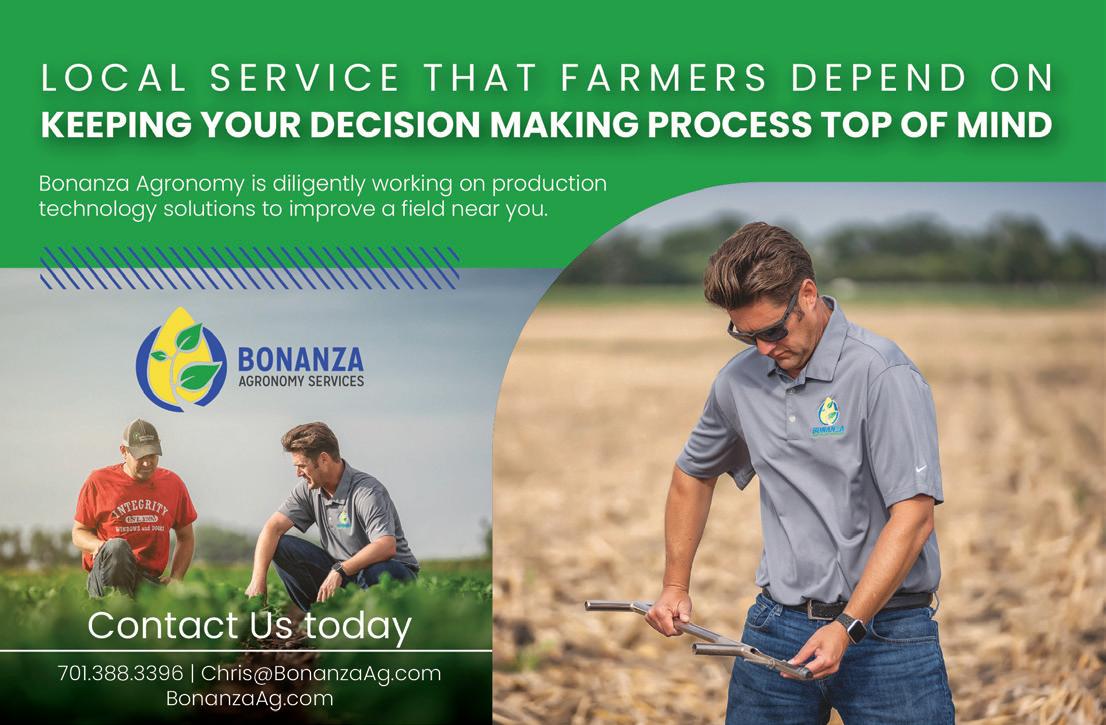
Now that summer is finally here, Grand Farm has a lot of impressive innovations to talk about. In each issue of Future Farmer, Emerging offers up insight into what's new and notable at the cross-section of start-ups and agriculture. This month, we learn more about some of Grand Farm's inventive partners and get a look at a recent podcast episode featuring Robert Saik and Kyle Courtney!


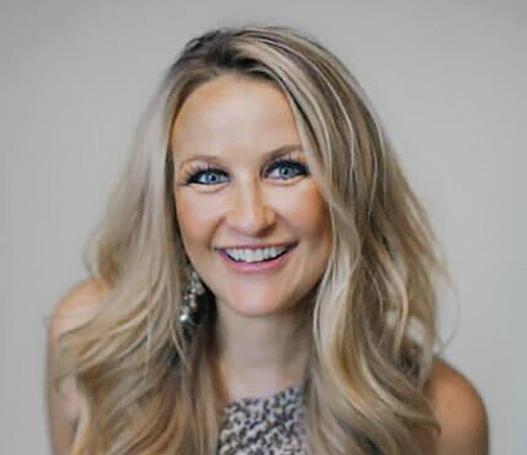

ratos Defense & Security Solutions, Inc. (NASDAQ: KTOS) is a Technology Company in the defense, national security, and global markets. Today, Kratos has multiple self-driving trucks deployed on the road across the United States, supporting new deployment use cases and territories. Kratos deploys selfdriving trucks to solve the real-world workforce and safety issues of today that are burdening critical transportation and supply chain operations. Since Kratos first adapted its U.S. Department of Defense (DOD) driverless technologies to commercial markets in 2014, Kratos has continually expanded its driverless solutions and applications to the overall driverless trucking industry.
The Kratos strategy for its commercial self-driving truck deployments has been methodically crafted in a progressive manner to capture a market comprised of millions of candidate vehicles. Starting with a driverless system design that is added to existing vehicles rather than only being available in newly purchased pre-configured vehicles, the Kratos technology can be applied to hundreds of millions of existing vehicles. This approach makes the application of driverless trucks achievable to effectively any municipality, organization, or company operating trucks today. Considering safety as the number one priority, Kratos has worked closely with highway authorities and stakeholders at the state and federal levels to coordinate the driverless technology implementation, define Operational Design Domains (ODD), and ensure regulatory and legislative compliance.


The Kratos systems are deployed in short-haul Leader-Follower Platoons where a human-driven leader truck transmits navigation data to the driverless follower truck traveling closely behind. This short-haul deployment configuration provides a near-term driverless truck solution by avoiding the need to navigate the often complex multi-state legislative environments of long-haul operations. Kratos’ deployment configuration also benefits from using human-in-the-loop decision-making to address edge- and corner-case scenarios versus total reliance on new and largely unproven artificial intelligence and machine learning algorithms of independent autonomous trucking systems. This strategy has proven successful and is the key enabler for Kratos to deploy a range of self-driving trucks across the United States.
Steve Fendley, president of Kratos' Unmanned Systems Division, said, “Our technology, approach, and cost level is unique and game-changing. This sets us up with differentiators that can capture the existing truck/vehicle market rather than depend only on customers who can afford to buy new trucks/vehicles to achieve driverless capability. To this end, our market potential is tremendous and exists today. Couple that with the increasing driver shortage and the potential multiplies. Across the company, we’re excited to watch our technology spread across the U.S. and to the rest of the world. Kratos’ strategy and approach is to develop logical, practical, elegant, and affordable solutions to complex problems. The Kratos driverless truck systems epitomize our approach.”
Kratos deployed its first commercial self-driving trucks to support transportation infrastructure maintenance for increasing work zone safety as the Autonomous Truck Mounted Attenuator (ATMA). The ATMA, developed in collaboration with multiple state departments of transportation and highway patrol agencies, is a first-of-its-kind automated maintenance truck operating in a Leader-Follower Platoon with the driverless technology retrofit to existing fleet vehicles. The ATMA is deployed as a shadow vehicle, replacing conventional human-operated Truck Mounted Attenuator (TMA) vehicles used to protect workers and equipment ahead in mobile highway maintenance operations. Thousands of TMA trucks are deployed across the globe every day, and the drivers of these vehicles risk their lives daily as


human-driven crash barriers, protecting maintenance crews from an errant vehicle entering the work zone. To date, Kratos has deployed 12 ATMAs across the United States, as well as one in England, and the system has been recognized as a gamechanging critical safety alternative to human drivers.
Using driverless technology to eliminate this dangerous job, repurposing the former TMA driver has also caught the attention of federal highway authorities. The ATMA was recently selected by the U.S. Department of Transportation (DOT) Strengthening Mobility and Revolutionizing Transportation (SMART) grant program of the Bipartisan Infrastructure Law (BIL) initiated for advancing smart community technologies and systems
to improve transportation efficiency and safety. This program will facilitate nationwide ATMA planning and scaled-up deployment coordination across the United States at a quicker pace.
Leveraging the success of the ATMA, Kratos has also retrofitted driverless technology to Class 8 Semi-Tractor/Trailer trucks deployed in a Leader-Follower Platoon, using the self-driving solution to harden Supply Chain activity against the impacts of the truck driver shortage burden. According to the American Trucking Association, this is currently a deficit of 80,000 available qualified truck drivers in the United States; this number is anticipated to rise to 160,000 by 2030. Addressing this issue, Kratos’ driverless technology is strategically deployed to support integrated end-to-end supply chain activity, achieving industry safety and operational goals. The first systems were deployed in North Dakota and Minnesota and accomplished several self-driving truck milestone achievements that included being the first:
• North Dakota Leader-Follower Platoon
• Minnesota Leader-Follower Platoon Northwest Passage deployment locations
Agriculture hauling operations
• Renewable Energy hauling operations
• Winter weather deployments under extreme snow/ice/fog/cold temperature conditions
• Caged-flatbed trailers
• Tanker trailers
• 99,000-pound hauling weight (each truck with a fully loaded trailer)
Maynard Factor, VP of Business Development for the Kratos Unmanned Systems Division, said, “Kratos' self-driving truck solutions are industry game-changers, addressing the issues burdening key transportation and supply chain activities of today. Kratos is uniquely positioned as a developer of transformative systems, platforms, and products to adapt technology developed for military/defense applications into commercial markets. Leveraging field-proven pilotless/ driverless technology, communications technology, command and control technology, and other advanced technologies developed across the Kratos organization enables our commercial driverless truck deployments to be safe, adaptable, and reliable in harsh environments previously not considered by other self-driving truck companies. Ensuring safety and business continuity are critical customer concerns and Kratos' self-driving trucks are proving to be a viable solution for meeting these goals.”
The Kratos Leader-Follower Platoon initially hit the road in Florida, traveling
several test route locations across US-90 and Interstate-10 and coordinating with the Florida Department of Transportation and Highway Patrol agencies to ensure technology and regulatory compliance. Upon achieving several preliminary deployment objectives, the driverless trucks were then transported for actual deployment to North Dakota and Minnesota to support niche short-haul applications.
The first set of Leader-Follower Platooning trucks was deployed in Wahpeton, North Dakota with Minn-Dak Farmers Cooperative (MDFC), one of America’s largest sugar beet shareholder/grower cooperatives. The trucks deployed from the MDFC facility with empty caged-flatbed trailers to a piling location approximately 30 miles away, where harvested sugar beets were stored. Once at the location, the leader and follower trucks were both loaded to approximately 99,000 pounds and navigated back to the MDFC facility, where they were unloaded. Multiple runs were performed in varying extreme winter conditions, traveling in hands-free driverless follower mode through the entire North Dakota route. The second set of Leader-Follower Platooning trucks has been deployed for preliminary evaluation in Northern Minnesota. The trucks are connected to tanker trailers and are the first self-driving trucks to haul nonHAZMAT biodiesel in routes between plants performing various phases of the refining
process. A third set of trucks will be deployed in the Ohio/Indiana region with a third-party logistics (3PL) organization to support various revenue-generating routes to be announced in a follow-on release.
Kratos Defense & Security Solutions, Inc. (NASDAQ: KTOS) is a technology company that develops and fields transformative, affordable systems, products, and solutions for United States National Security, our allies, and global commercial enterprises. At Kratos, Affordability is a Technology, and Kratos is changing the way breakthrough technology is rapidly brought to market —at a low cost—with actual products, systems, and technologies rather than slide decks or renderings. Through proven commercial and venture capitalbacked approaches, including proactive, internally funded research and streamlined development processes, Kratos is focused on being first to market with our solutions well in advance of the competition. Kratos is the recognized technology disruptor in our core market areas, including Space and Satellite Communications, Cyber Security and Warfare, Unmanned Systems, Rocket and Hypersonic Systems, Next-Generation Jet Engines and Propulsion Systems, Microwave Electronics, C5ISR, and Virtual and Augmented Reality Training Systems.
Certain statements in this press release may constitute "forward-looking statements" within the meaning of the Private Securities Litigation Reform Act of 1995. These forward-looking statements are made on the basis of the current beliefs, expectations, and assumptions of the management of Kratos and are subject to significant risks and uncertainty. Investors are cautioned not to place undue reliance on any such forward-looking statements. All such forward-looking statements speak only as of the date they are made, and Kratos undertakes no obligation to update or revise these statements, whether as a result of new information, future events, or otherwise. Although Kratos believes that the expectations reflected in these forward-looking statements are reasonable, these statements involve many risks and uncertainties that may cause actual results to differ materially from what may be expressed or implied in these forward-looking statements. For a further discussion of risks and uncertainties that could cause actual results to differ from those expressed in these forward-looking statements, as well as risks relating to the business of Kratos in general, see the risk disclosures in the Annual Report on Form 10-K of Kratos for the year ended December 25, 2022, and in subsequent reports on Forms 10-Q and 8-K and other filings made with the SEC by Kratos.

Q: TELL US ABOUT YOUR COMPANY AND YOUR MISSION.
A: Our purpose is to be order where there is chaos in the supply chain. Valor Victoria coordinates the movement of containers across the United States. Our customers are major US importers and exporters along with freight consolidators. A unique attribute of our style of doing business is that we also consider vendor partners to be customers (e.g. railroads, ocean carriers, ports, rail terminals, trucking, and chassis companies). Even though we’re technically the customer in a vendor relationship, our goal is to put the best interests of vendors at the forefront of Valor Victoria’s strategy. Helping others win has led to our own success time and time again.
Q: WHAT ARE SOME WINS YOU ARE CELEBRATING?
A: Less than 1% of women-owned businesses reach $1 million in revenue. We’re blessed to be a part of the 1%.
Q: WHAT IS THE MOST IMPORTANT LESSON YOU’VE LEARNED THROUGHOUT YOUR ENTREPRENEURIAL JOURNEY?
A: Control is an illusion. Patience, perseverance, and honor always win.
Q: VALOR VICTORIA IS OFFICIALLY A PART OF THE FARGOMOORHEAD FOUNDER FAMILY. HOW CAN OUR COMMUNITY SUPPORT YOU IN YOUR NEXT STAGE OF GROWTH?
A: When we moved to North Dakota in December, we also moved Valor Victoria’s corporate HQ to West Fargo. We plan to have an office in the area and hire local talent with
North Dakota ingenuity and heart. If you know anyone who fits this mold, we’d love to meet them! Also, on the personal side, we’ll take all the local recommendations from restaurants to family activities in our new community.
Q: WHAT ARE YOU GRATEFUL FOR TODAY?
A: I’m grateful for my husband and a God that never fails me. First, my husband, who believed in the concept of Valor Victoria and allowed me the opportunity to ‘bootstrap’ this company with personal finances. There was an incredible amount of faith that went into those first few years of heavy investment. We didn’t have certainty that our investment would generate a return, but we believed that God had a good and prosperous end in mind for us. In a lot of ways, we’re still in this place of blindly trusting the end will work out for our good, but we’ve come a long way! When starting Valor Victoria, my prayer was to build a scenario where when I came to be a mom, I could dictate my schedule and priorities. Because of the faith Thomas had in me and my business concept, and our collective faith in the goodness of God, this is my reality today. Every week is filled with monumental challenges and victories and I’m thankful to have both by my side for the wild ride that is entrepreneurial life.
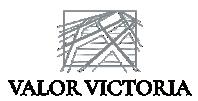
Readers can learn more about Ashley and Valor Victoria online at: valorvictoria.com
Ashley Ritteman is the CEO and co-founder of Valor Victoria. Ashley’s passion for rail networks began when studying the inland flows of international containers as a graduate student at NDSU. She knew there had to be a way to reduce the cost for importers while driving capacity into the hands of exporters.

“I am blessed to have turned this passion into a business and now have a great team that has come alongside this vision, making it even greater.“

Valor Victoria brings order to the chaos, overcoming barriers at every point along the inland supply chain. Their team can move your containers into America’s interior more quickly and cheaply by expanding your options for inland intermodal. Valor Victoria’s focus on US exports is a unique element of its service offering. They take the burden of matching each import load with an export load and operationally ensuring a quick turnaround.
 Photo provided by Emerging Prairie
Photo provided by Emerging Prairie




To boldly grow food where no food has been grown before



Intelligent Energy is focused on the development and manufacturing of its lightweight hydrogen fuel cell products ranging from 800W to 200kW for customers in the automotive, aerospace, generator, telecoms, materials handling, and unmanned aerial vehicle (UAV) sectors. The company is headquartered and manufactures in Loughborough in the UK, with additional offices and representation in the US, Japan, China, and South Korea.
intelligent-energy.com
BWR Innovations, LLC is a Fargo, North Dakota-based private company with a team of seasoned, accomplished professionals that are creating innovative temperature monitoring, telemetry, and hydrogen/fuel cell-based products. Their products include the iNsite ioT product line of wireless temperature monitoring products and the Sol Source fuel cell energy systems.
bwr-innovations.com
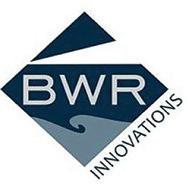
North Dakota-based BWR Innovations signs Volume Supply Agreement with Intelligent Energy for IE-POWER fuel cell modules.
Intelligent Energy (IE) is pleased to announce the signing of the agreement at Hannover Messe 2023. The agreement will enable BWR to secure a greater supply of the modules to meet the growing customer demand for its Oncore Residential Generator in the US alongside the growing demand across Federal Government departments to decarbonize and switch from diesel generators.
The two companies have been working together since 2018 on the development of zero-emission power solutions, incorporating IE-POWER hydrogen fuel cell modules.
David Fields, Head of Product Line, IE-POWER at Intelligent Energy, said, “It is a pleasure to work with an organization that shares the same passion as
Intelligent Energy on the positive benefits of fuel cells in decarbonization. The USA offers very strong financial incentives for switching to hydrogen on generation of power and our partnership with BWR enables IE to be part of a fast-growing market.”
BWR Innovations CEO, Joel Jorgenson, stated, “We are excited to partner with Intelligent Energy, a company with unmatched products and a proven track record of innovation in the hydrogen fuel cell industry. Our shared vision and expertise will enable us to introduce hydrogen generator systems to US markets and provide clean energy solutions that benefit both our customers and the environment.”
